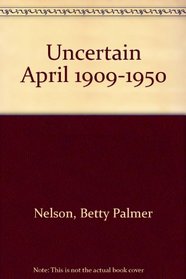From Publishers Weekly
In the late 1950s, the U.S. Government touted atoms for peace; the Atomic Energy Commission (AEC) and its research arm, the Livermore National Laboratory (LNL) envisioned changing the face of the earth with atomic blasts that would gouge out canals and harbors, move mountains and deflect ocean currents. Edward Teller, director of the LNL, proposed "Project Chariot" to create an instant deepwater harbor at Cape Thompson in northwest Alaska by detonating several thermonuclear bombs. The site was about 30 miles from Point Hope, the oldest continually occupied settlement in North America and home to some 50 native households. Representatives from the AEC and LNL (including Teller) flocked to Alaska to sell the project, assuring residents that it would be safe and promising that the project would be scrapped if environmental studies indicated danger. O'Neill, an oral historian at the University of Alaska, gives an engrossing, well-documented account of events that led to cancellation of the project. He deftly tells a sorry story of government mendacity and deception and an inspiring tale of courageous opposition by local residents, early environmental activists and scientists willing to risk their careers to stop the plan.
Copyright 1994 Reed Business Information, Inc.
From Library Journal
O'Neill, an oral historian at the University of Alaska, Fairbanks, has prepared a carefully written, well-researched, and well-documented history of Project Chariot, a 1958 government plan to put nuclear explosives to nonmilitary uses. Or so it was said. The idea was to blast a harbor into the coast of Alaska, using buried nuclear bombs. The government claimed no harm would come to human or animal residents, even though Eskimos lived within 30 miles of the planned ground zero. This is a riveting, if frightening, story of government duplicity and politics. It is also the tale of concerned individuals and groups who rallied to stop the project, conducting what must have been the first environmental impact research ten years before such studies were defined and mandated. The author has done a remarkable job of organizing vast amounts of information into a story that reads like a suspense novel. The epilog describing the present-day status of individuals, groups, and agencies provides interesting closure. Strongly recommended for environmental collections.
Nancy Moeckel, Miami Univ. Libs., Oxford, Ohio
In the late 1950s, the U.S. Government touted atoms for peace; the Atomic Energy Commission (AEC) and its research arm, the Livermore National Laboratory (LNL) envisioned changing the face of the earth with atomic blasts that would gouge out canals and harbors, move mountains and deflect ocean currents. Edward Teller, director of the LNL, proposed "Project Chariot" to create an instant deepwater harbor at Cape Thompson in northwest Alaska by detonating several thermonuclear bombs. The site was about 30 miles from Point Hope, the oldest continually occupied settlement in North America and home to some 50 native households. Representatives from the AEC and LNL (including Teller) flocked to Alaska to sell the project, assuring residents that it would be safe and promising that the project would be scrapped if environmental studies indicated danger. O'Neill, an oral historian at the University of Alaska, gives an engrossing, well-documented account of events that led to cancellation of the project. He deftly tells a sorry story of government mendacity and deception and an inspiring tale of courageous opposition by local residents, early environmental activists and scientists willing to risk their careers to stop the plan.
Copyright 1994 Reed Business Information, Inc.
From Library Journal
O'Neill, an oral historian at the University of Alaska, Fairbanks, has prepared a carefully written, well-researched, and well-documented history of Project Chariot, a 1958 government plan to put nuclear explosives to nonmilitary uses. Or so it was said. The idea was to blast a harbor into the coast of Alaska, using buried nuclear bombs. The government claimed no harm would come to human or animal residents, even though Eskimos lived within 30 miles of the planned ground zero. This is a riveting, if frightening, story of government duplicity and politics. It is also the tale of concerned individuals and groups who rallied to stop the project, conducting what must have been the first environmental impact research ten years before such studies were defined and mandated. The author has done a remarkable job of organizing vast amounts of information into a story that reads like a suspense novel. The epilog describing the present-day status of individuals, groups, and agencies provides interesting closure. Strongly recommended for environmental collections.
Nancy Moeckel, Miami Univ. Libs., Oxford, Ohio




